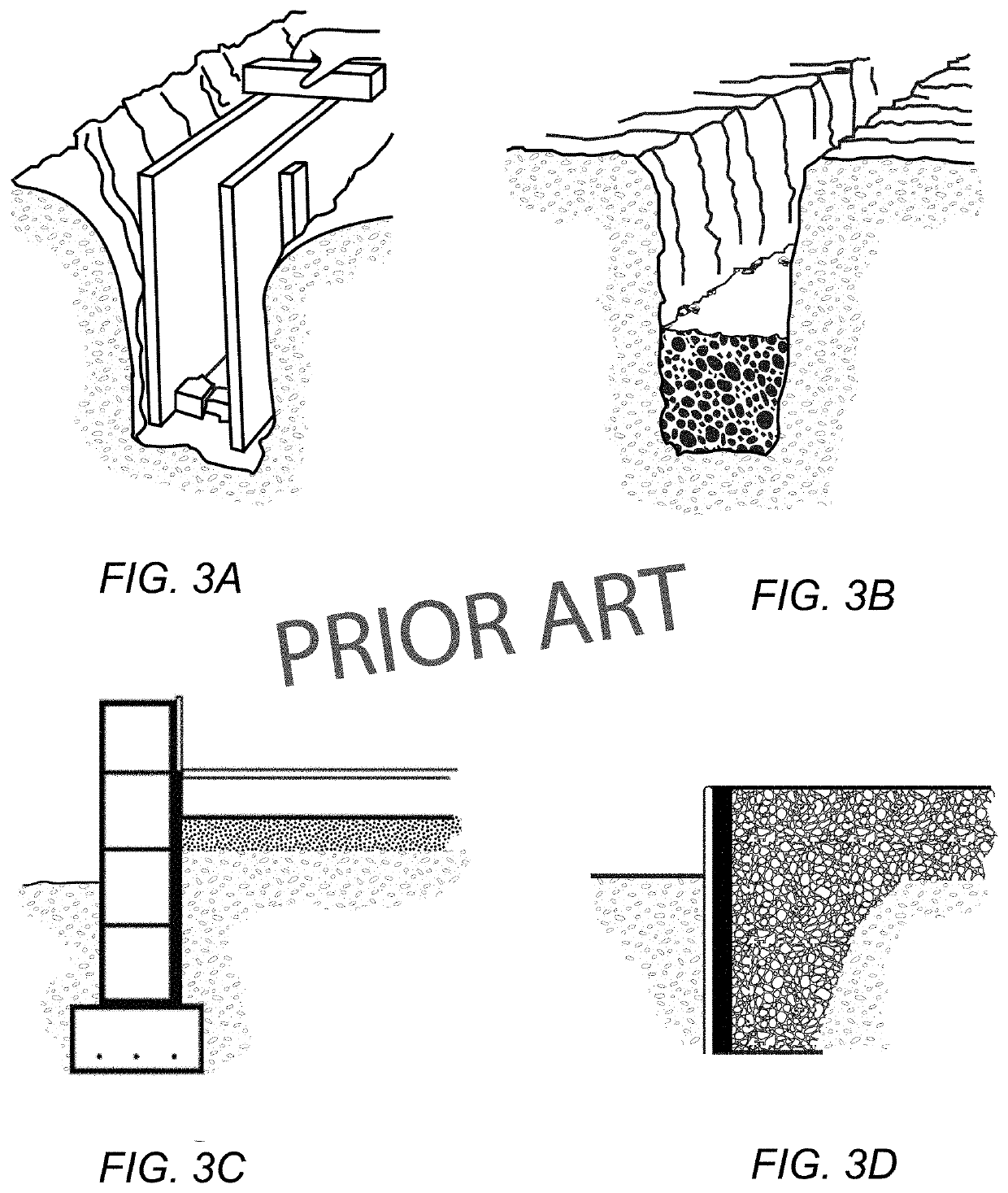Apparatus For Reinforced Cementitious Construction By High Speed 3D Printing
a technology of reinforced cementitious and 3d printing, applied in auxillary shaping apparatus, ceramic extrusion die, manufacturing tools, etc., can solve the problems of constant price fluctuations, high labor intensity, and common use of iron rebar in concrete structures and construction, so as to reduce or eliminate random internal cracking and or deformation, improve internal brick reinforcement characteristics, and limit or eliminate the effect of random cracking
- Summary
- Abstract
- Description
- Claims
- Application Information
AI Technical Summary
Benefits of technology
Problems solved by technology
Method used
Image
Examples
Embodiment Construction
[0479]Referring to FIG. 8, according to the present invention the automated construction system transport train system includes an easily onsite assembled guide rail track system for transporting one or more automated construction system transport train(s) thereon. The guide rail track system extends in a travel direction and the automated construction system transport train or trains may be driven in (forward) and counter to (reverse) the travel direction by one or more drive stations. A plurality of position sensing units each determines the positions of the automated construction system transport train or trains. A programmable logic controller (PLC) is in signal communication with the drive stations and position sensing units, and is configured to accurately drive the automated construction system transport train with drive stations based on the train positions for accurately determined by the position sensing units.
[0480]The automated construction system guide rail track system...
PUM
| Property | Measurement | Unit |
|---|---|---|
| shape | aaaaa | aaaaa |
| pressure | aaaaa | aaaaa |
| flow rate | aaaaa | aaaaa |
Abstract
Description
Claims
Application Information
 Login to View More
Login to View More - R&D
- Intellectual Property
- Life Sciences
- Materials
- Tech Scout
- Unparalleled Data Quality
- Higher Quality Content
- 60% Fewer Hallucinations
Browse by: Latest US Patents, China's latest patents, Technical Efficacy Thesaurus, Application Domain, Technology Topic, Popular Technical Reports.
© 2025 PatSnap. All rights reserved.Legal|Privacy policy|Modern Slavery Act Transparency Statement|Sitemap|About US| Contact US: help@patsnap.com



